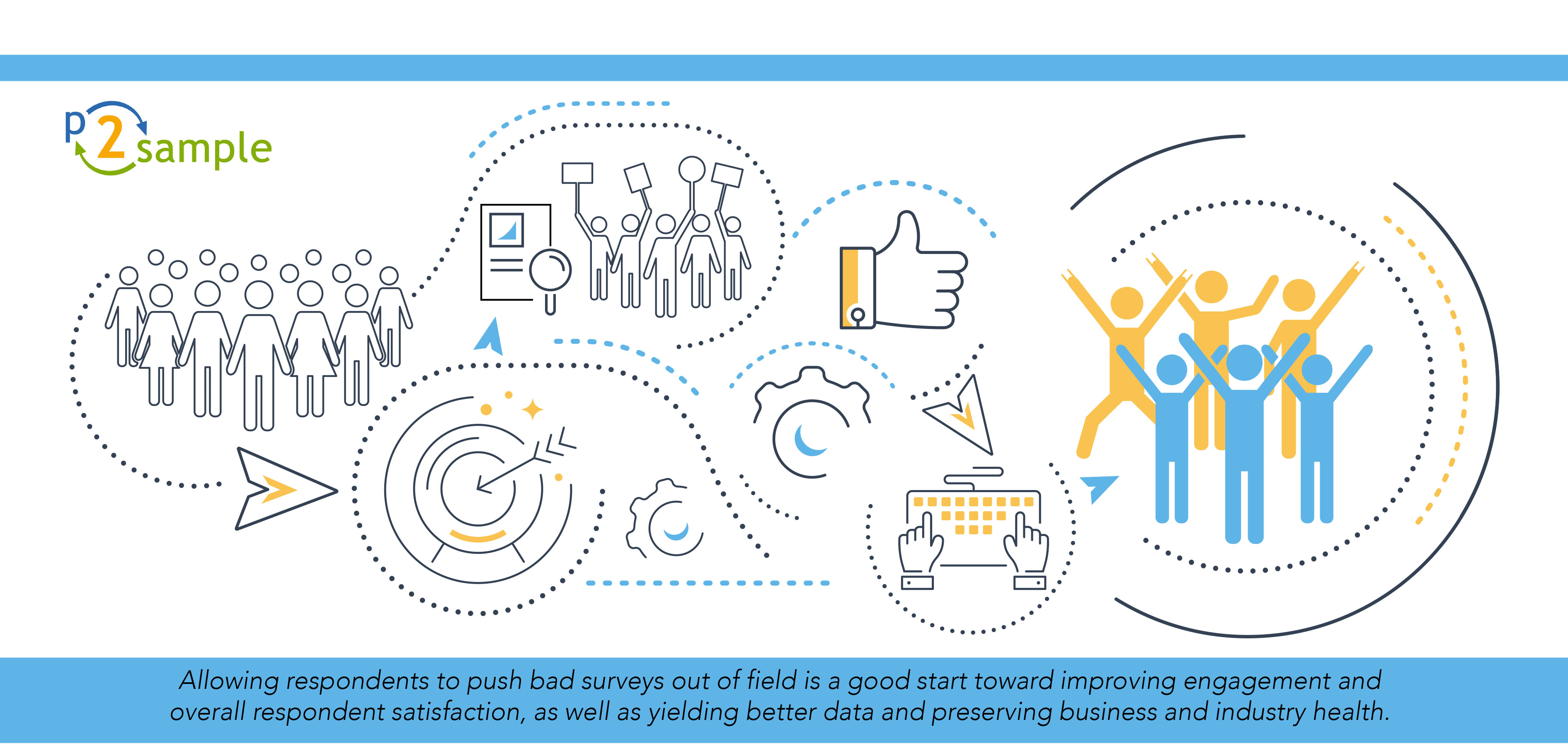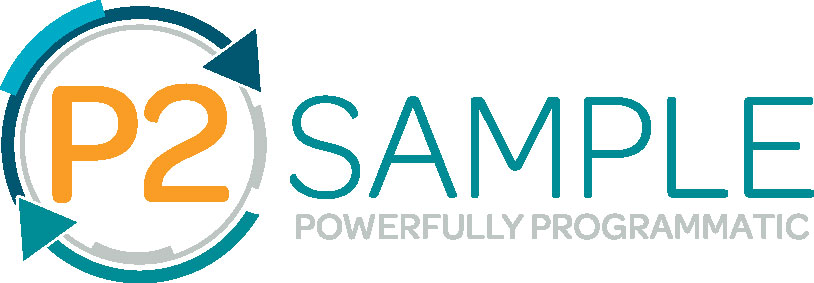SPONSORED CONTENT
JD Deitch
CRO, P2Sample
 Marketers, journalists, ethnographers, sociologists – well, just about everyone – is talking about consumer power. Millennials might be credited with driving this change but every generation is reaping the benefits. People demand quality experiences, personalization and ease of use or they will simply move on. Whatever field we are working in, including market research, consumers are forcing companies to tailor products and services to suit them.
Marketers, journalists, ethnographers, sociologists – well, just about everyone – is talking about consumer power. Millennials might be credited with driving this change but every generation is reaping the benefits. People demand quality experiences, personalization and ease of use or they will simply move on. Whatever field we are working in, including market research, consumers are forcing companies to tailor products and services to suit them.

Historically, in the market research space, creating a positive experience has been the responsibility of the researcher or questionnaire writer. Sampling companies simply provided the people. Yet as computing power and automation have come to dominate the market research process, both sample companies and researchers have largely failed to keep up. The result is that atrocious respondent engagement is now a “feature” of the market research tech stack. It doesn’t have to be this way though. Programmatic techniques give sample companies the ability and opportunity to start treating respondents respectfully – but only if we choose to do so.
Programmatic sampling is the automation of the sample buying/selling process. While the specifics vary by provider, it basically involves buyers and sellers digitally exchanging demographic information and field status and directing respondents into survey projects. The automated nature of programmatic sampling makes it compelling for its efficiency and cost-effectiveness. Unfortunately, though, this is the point where most sample providers stop, despite the many ways in which programmatic techniques can fundamentally improve quality and accuracy.
As an industry, we cannot be satisfied to merely be faster and cheaper. Sample suppliers and buyers need to insist on the following commitments.
Stop tolerating bad experiences: Bad respondent experiences yield lower response rates and bad data. It is baffling how this remains an issue despite mountains of evidence in the form of industry studies, reports and direct remarks from respondents. In GreenBook’s recent GRIT Consumer Participation in Research study, findings showed that only a quarter of research participants were satisfied with their experiences. How can sample suppliers expect good data when they knowingly mistreat the people who are giving them that data? For an industry that strives to explain and predict consumer behavior, this is deliriously irresponsible. Programmatic techniques can indeed mitigate the myriad of regularly-occurring problems – from soul-crushing router bouncing to avoidable overquotas and terminations (“sorry, but after answering 20 questions, we’ve found out you’re not qualified”) to harrowing survey designs. But this can only happen if the commitment to the respondent experience is built into the platform. A good place to start is by letting respondents push bad surveys out-of-field. Machines that employ “self healing” algorithms yield better data and preserve the long-term health of the business and the industry.
Make technology solve the other problems as well: Programmatic sampling is more than “add a dash of tech and stir.” Automation-driven integrations that improve sampling speed and enable better targeting and more efficient quota management, while at the same time decreasing costs and improving productivity, are only the beginning. Programmatic techniques can open the doors to real-time sampling and enable the collection of deep profiling data while providing for even better fraud recognition and checks on response quality. We are not far from witnessing massive improvements in machine-driven field monitoring and proactive error-correction, as well as pricing and feasibility. Programmatic opens vast possibilities for greater reliability, efficiency, global reach and feasibility and dependability.
Demand agility, not speed: In the race to adapt to new business conditions, we should not be content to merely go fast. For what we end up sacrificing is good sense, adaptability and the critical reflection that our techniques are fit for purpose. Agile programmatic platforms enable quick and dynamic sample sourcing and flexible technology that powers new methods and research techniques without compromising quality.
Nimble use of programmatic sampling has clear benefits. At its heart are the speed and cost savings that the industry demands, while automation and machine learning hold promise for greater dependability and reach. But the biggest advantage – and the biggest takeaway for sample providers – is that technology can meaningfully improve respondent engagement. We can no longer ignore or defer this responsibility. Programmatic techniques give us the tools to provide more accurate and reliable data – and we should do so.

www.p2sample.com
sales@p2sample.com
404-446-2720
Respondent engagement best practices
The problem of declining cooperation rates is a concern for many in our industry, as evidenced by the multiple mentions of it from researchers who participated in the 2017 edition of Quirk’s annual survey of corporate researchers and by comments from presenters and attendees at industry conferences. Respondents are the lifeblood of marketing research and while questionnaire best practices are commonly shared across the industry, comparatively little has been written about best practices for sampling as it relates to respondent engagement. Below are some of our top tips, offered with the goal of making 2018 the year we stem the tide of declining cooperation.
Limit “router bouncing”
One of the worst implementations of sampling automation is the endless router bounce. This is a function of two main problems. One is poor technology integration that prohibits the seamless sharing of even limited profile data. The second is supplier greed where, like last season’s fashions on a clearance rack, vendors send participants from router to router in search of qualification. The combination creates a terrible experience for the respondent where they are passed from Web site to Web site and are re-asked over and over to provide their age, sex and other basic characteristics.
Qualify quickly
Qualify or disqualify respondents as quickly as possible and never in the middle or end of the survey. Respondents are uniformly frustrated after spending several minutes in a survey only to find themselves terminated, whatever the reason. This has a negative effect on their overall attitude toward surveys and can impact quality on the very next survey they attempt.
Don’t sacrifice QA for speed
Do not cut corners under the premise that the survey is only a “quick read” and therefore can be sped into field. Would you be happy if respondents only paid scant attention under that same premise? Run the same checks for comprehension, logic and execution. A “soft launch” of the survey, e.g., launching to a fraction of the entire sample, is always good practice.
Pay close attention to dropout rates
The rate at which people abandon a study is a direct indication of the quality of the responses you will receive. Dropouts are the researcher’s fault, not the respondent’s. Moreover, a person who has abandoned a survey is twice as likely to stop taking surveys altogether. Analyze dropouts question by question (and across sample providers) to find the problems while taking open-end feedback into account. Don’t discount the possibility that a bad survey setup could have introduced bias that might require exclusion of certain questions in the final results.
Communicate clearly and concisely
Unclear and misleading communication creates frustration and disappointment. Explain why you terminate people. Be honest about study length and don’t lowball your estimate. Not only can this impact the quality of responses, it also reduces the respondent’s likelihood of participating in future studies.
Ask your suppliers for proof
Get beyond marketing literature and ask sample and panel providers for proof of their commitment to respondent experiences. Get test links and try the experience yourself. These are not difficult steps and they could mean the difference between great insights and a big mistake.
www.p2sample.com
sales@p2sample.com
404-446-2720
